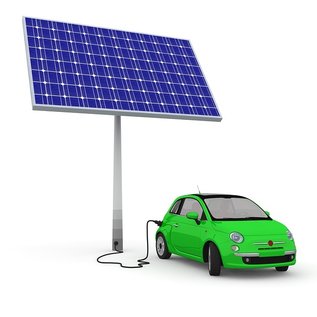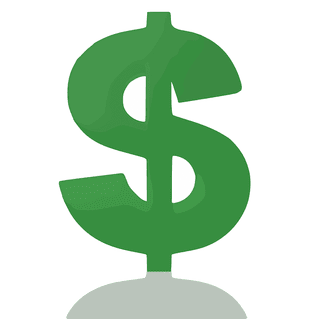Benifits of Solar Power
The amount of solar energy falling onto the surface of our parking lots, residential roofs, commercial and industrial rooftops, etc. is truly amazing.
Basically you could generate as much energy as the world uses if you covered an area a bit larger than the state of West Virginia (see this link for details).
So in addition to the fuel being free, the fuel also never spills. O.K. technically it does, but when there is a solar panel spill we call it a "nice day"!
There is no waste product from the fuel. No coal ash storage pits, no nuclear waste, no particulates, or smog.
There is, however, no free lunch. The solar panels take energy to build and the power generated depends upon the sun. At night, no power, during cloudy days the amount of power generated is greatly reduced. To solve that issue, some form of backup, or power storage is needed.
The most practical method for most is to have a "grid tied" system. This way, you use your own solar when it is producing power, and the electrical grid when you are using more energy than your panels are providing.
When your panels are providing more power than you are using, that energy goes back into the grid. In Minnesota, utilities pay you for any excess energy you send to the grid.
You can also use a generator, or battery backup.
There are a number of other options which people have used, the above are simply some of the more common methods.
Basically you could generate as much energy as the world uses if you covered an area a bit larger than the state of West Virginia (see this link for details).
So in addition to the fuel being free, the fuel also never spills. O.K. technically it does, but when there is a solar panel spill we call it a "nice day"!
There is no waste product from the fuel. No coal ash storage pits, no nuclear waste, no particulates, or smog.
There is, however, no free lunch. The solar panels take energy to build and the power generated depends upon the sun. At night, no power, during cloudy days the amount of power generated is greatly reduced. To solve that issue, some form of backup, or power storage is needed.
The most practical method for most is to have a "grid tied" system. This way, you use your own solar when it is producing power, and the electrical grid when you are using more energy than your panels are providing.
When your panels are providing more power than you are using, that energy goes back into the grid. In Minnesota, utilities pay you for any excess energy you send to the grid.
You can also use a generator, or battery backup.
There are a number of other options which people have used, the above are simply some of the more common methods.
Our Solar Array
Size & UseTotal size is 18.9 kW, comprised of 61 panels.
This should be enough to produce as much power as both our house and cars use over a year. Even our lawnmower is electric! |
CostsIn 2016 there is a tax rebate of 30% of the cost of the system. Between this, net metering and other utility based incentives, we expect the financial payback to be about 10 years. For the next 20 years after that, the solar array will be producing electricity at no cost, which also means we will be driving at no cost for fuel.
|
Fuel
The fuel for our panels, is sunlight. It is free, not hazardous when spilled, requires no additional treatment after used, and won't run our for about 3 Billion years.
|
Should you get your hands on some solar panels? If so, how?
To get your hands on some of this clean, low cost power, you can buy panels, lease them, or possibly participate in a "community solar garden". Buying them can be thought of paying for your next 25-30 years of electricity all at once, but getting a 50%-75% discount. The "break even" time can be anywhere from 6-12 years depending upon incentives available where you live.
Leasing solar panels is another good option for many people, although not all areas have this as an option.
The way this typically works is a company that installs solar panels, such as Solar City, will install the panels on your roof.
You pay a monthly fee to Solar City. That monthly fee should be less than the amount you save on your electric bill due to the panels (if not, don't lease, it isn't a good deal;)).
Check with your local solar installers to see if this is an option in your area. Out in California this is quite common. Last I checked this has been very slow to catch on on Minnesota.
Recently in Minnesota, Community Solar Gardens have started being built.
The way a Solar Garden works is a large group of solar panels are set up at an appropriate area. Individuals who don't have a good location for panels can then lease panels. The power generated by the panels is then deducted from their power usage.
The specifics depend upon the utility and company or group that installed the Solar Garden.
It may have been the utility itself, or a business, or group of neighbors.
A good resource for more information from a Minnesota company is at Community Solar.
The way this typically works is a company that installs solar panels, such as Solar City, will install the panels on your roof.
You pay a monthly fee to Solar City. That monthly fee should be less than the amount you save on your electric bill due to the panels (if not, don't lease, it isn't a good deal;)).
Check with your local solar installers to see if this is an option in your area. Out in California this is quite common. Last I checked this has been very slow to catch on on Minnesota.
Recently in Minnesota, Community Solar Gardens have started being built.
The way a Solar Garden works is a large group of solar panels are set up at an appropriate area. Individuals who don't have a good location for panels can then lease panels. The power generated by the panels is then deducted from their power usage.
The specifics depend upon the utility and company or group that installed the Solar Garden.
It may have been the utility itself, or a business, or group of neighbors.
A good resource for more information from a Minnesota company is at Community Solar.


